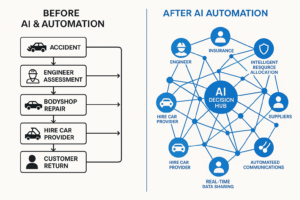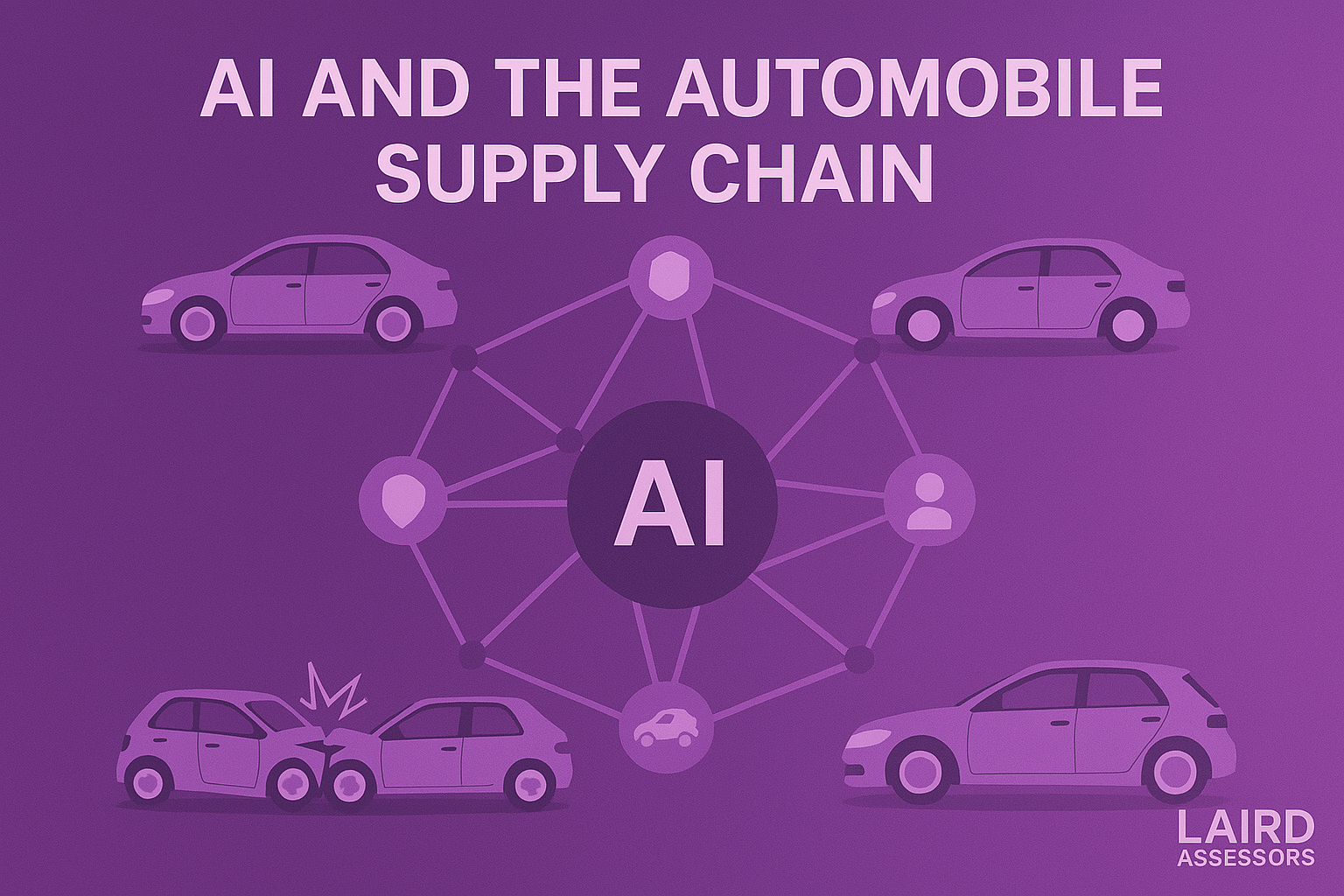Nik Ellis talks to Modern Insurance Magazine about how AI and Automation has Transformed a Linear Supply Chain into a Three-Dimensional Network
For many years the claims process has relied on a straightforward path of services; the supply chain. Much like a single-file procession, each link in the chain depended on the next to keep the claim process moving from FNOL to invoice. However, advances in artificial intelligence, automation, and data analytics have reshaped this traditional model. Instead of a chain, we now operate a three-dimensional hub; a dynamic, interconnected network that offers unprecedented agility, visibility, and control.
At Laird, our focus has traditionally been on engineering assessments, but we are experiencing a digital transformation. Our work requires close collaboration with multiple stakeholders: from insurers, claims management companies (CMC), bodyshops, hire car companies, salvage agents, and most importantly, the car owner.
From Linear Chain to Multi-Directional Flow
Traditional Supply Chain:
In the old supply chain model, each participant performed its function and passed on the “baton” to the next. Communication flowed in one direction, often limited to fulfilment, and perhaps status updates. Gaps in information often caused chases and delays.
Three-Dimensional Network:
We use Swiftcase, an AI-powered platform, to offer real-time data sharing across all nodes, centred around the end consumer, the policy holder. This means, for example, that the hire team (or company) can be informed of an unroadworthy car, the bodyshop instructed and the driver kept in the loop without having to wait for the CMC to process the engineer’s report. Instead of one link at a time, all stakeholders connect simultaneously, creating a robust “hub” of activity with multiple, constantly shifting pathways.
For Laird, this multi-directional data flow improves our ability to quickly source and deliver vital information about vehicle damage, repair / hire times, roadworthiness, repair type & indeed any information salient to any stakeholder.
Automation takes over repetitive tasks, such as data input, vehicle valuations, some estimating and a lot of communication. With these basic but essential operations streamlined, our teams have more time to tackle higher-level responsibilities and add that human touch.
Collaboration in a Hyper-Connected Era
Cross-Industry Partnerships:
The move from a traditional chain to a three-dimensional network means that repair industry collaborate more deeply. Laird often acts as a central node, connecting our engineers, bodyshops, hire car teams and insurers to build an accurate, data-driven picture of a vehicle’s repair needs, centred around the driver & ticking a fair few consumer duty boxes along the way.
Evolving Skill Sets:
As AI and automation handle more routine functions, our human skill sets evolve. We develop our engineers and teams continually, upgrade their digital skills to enhance the automation, use new software platforms, and collaborate with our partner network effectively.
Challenges and the Road Ahead
Balancing Technology with Human Expertise:
While AI provides faster, more precise data crunching, it can’t (yet) replace the nuanced judgment of an experienced automotive engineer or claims specialist. There are a few Visual Intelligence (VI) estimating systems out there but so far they only provide a two dimensional view of damage often missing huge chunks of latent damage; great for scratches & dents, dangerous for proper crashes.
Beyond the Chain: AI-Driven Supply Networks
AI and automation have indeed reshaped our traditional supply chain into a vibrant, interconnected network. This three-dimensional model boosts efficiency, reduces costs & key-to-key times and provides real-time transparency, ultimately improving service for every stakeholder, from the hire company and bodyshop, to insurers and CMCs, and most importantly, to the end customer, the driver.
We’re not just keeping pace with these sweeping changes, we’re driving them forward. By weaving human ingenuity into AI-driven insights, we can deliver faster, more precise solutions without losing sight of the personal touch our clients rely on. It’s no longer about simply moving a product through a chain; it’s about navigating a living, breathing web of possibilities.
2025
Looking ahead, 2025 promises to be a landmark year for AI-driven solutions, particularly through the wide-scale implementation of GPT and Agentic models within Swiftcase. These advanced language models will enable near-instant analysis and interpretation of complex documents, from third party queries to highly detailed engineering reports, while agents will be used to drive the systems forward. In practical terms, GPT-enhanced tools will streamline communication across our extended network, prompting rapid collaboration between CMCs, bodyshops, hire car teams and others supplying services around the customer and their vehicle repairs.
Whether it’s automatically generating comprehensive damage assessments or creating swift, data-driven pricing strategies, the use of AI will unleash new levels of efficiency and accuracy. Ultimately, this intelligent automation will empower Laird to stay at the forefront of the evolving supply network, delivering real-time insights and enabling faster, more informed decisions on behalf of our clients.
Reproduced with kind permission from Modern Insurance Magazine.

